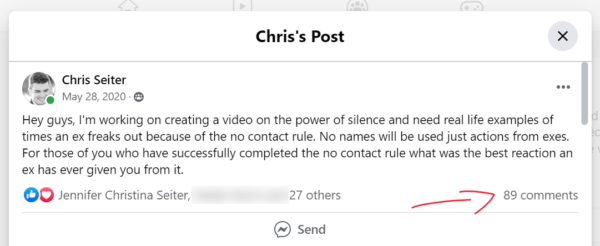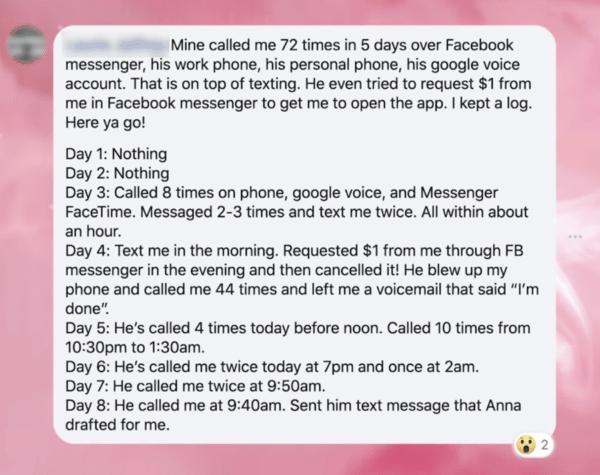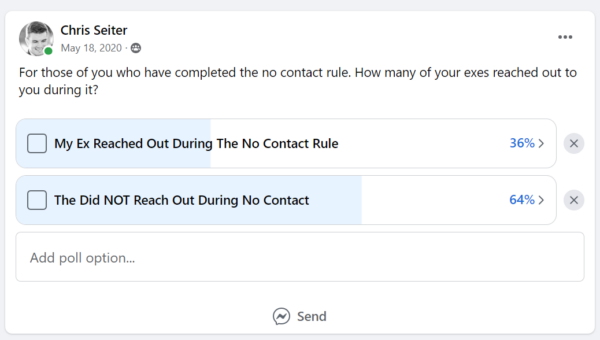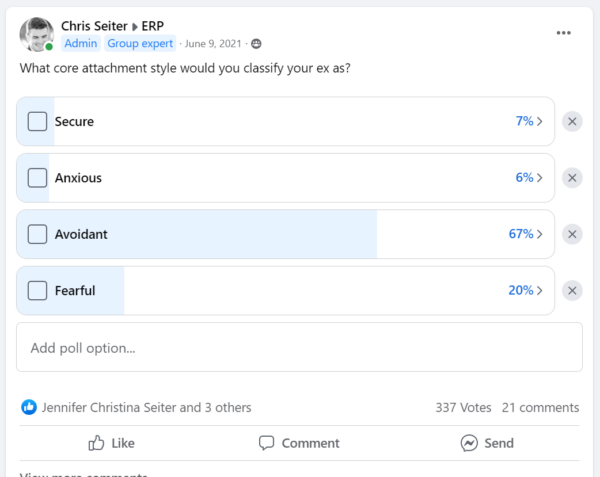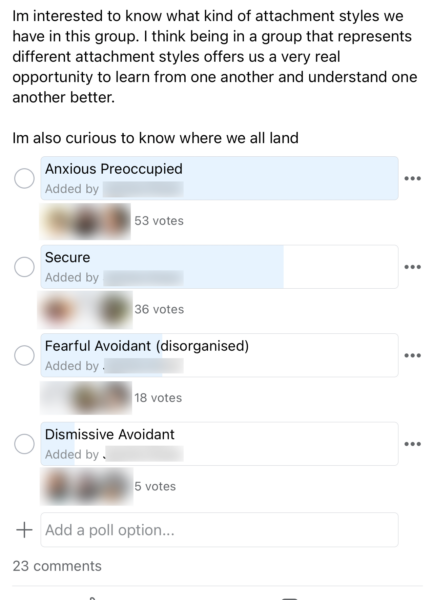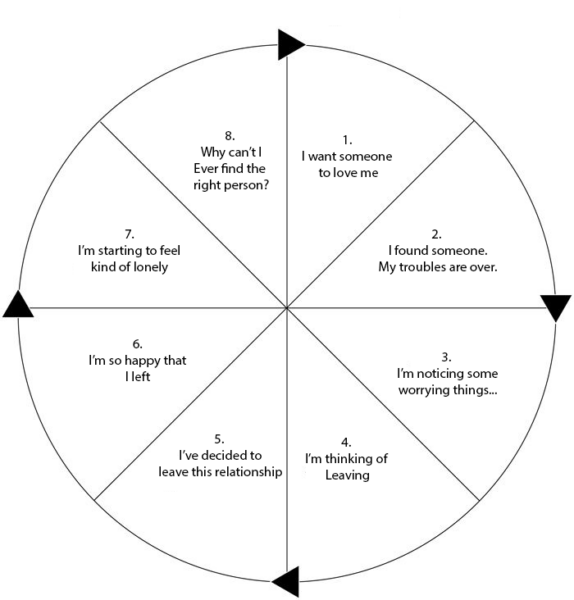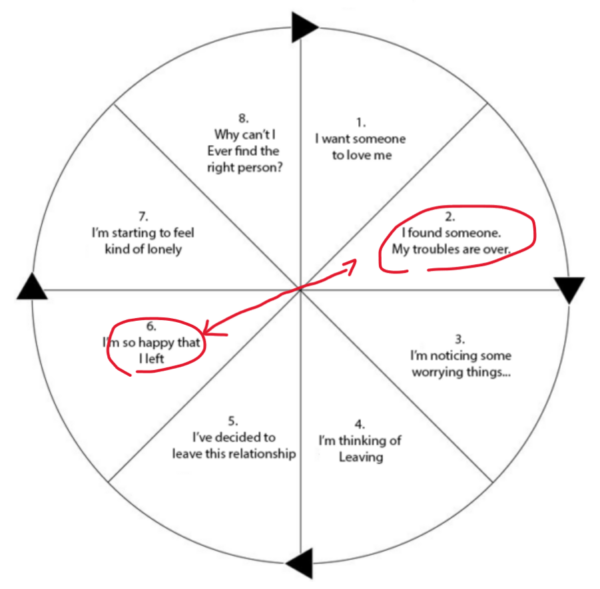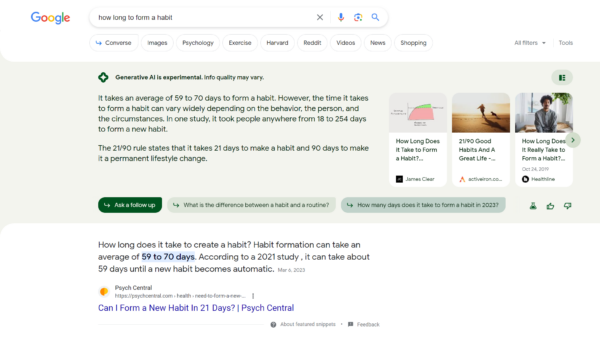Today I’m going to do a deep dive into the psychology behind a no contact rule. No, I’ve talked about this quite a bit over the years. However, today I’d like to talk about a few of the statistically inconsistencies I’ve noticed with my research. Then, I would like to use psychology to explain why there are inconsistencies.
I’ll be talking about,
- Psychological Reactance
- Why Expecting A No Contact Rule To Make Your Ex Reach Out Is Doomed To Fail
- Understanding The Data Discrepancies
- Learning About Dismissive Avoidant Psychology
- Understanding Core Wounds
- The Endless Chase For Honeymoon Periods
- Why Exes Usually Don’t Reach Out During No Contact
- How Long The Ideal Time Frame Is For No Contact
Let’s get right to it.

What Are Your Chances of Getting Your Ex Boyfriend Back?
Take the quizLearning About Psychological Reactance
When it comes to breakups the term “no contact” is everywhere.
Yet, when people talk about the no contact rule there’s a natural assumption that if they do it, their exes are a lot more likely to reach out to them.
They’ve completely bought into this idea of psychological reactance.
https://en.wikipedia.org/wiki/Reactance_(psychology)
In psychology, reactance is an unpleasant motivational reaction to offers, persons, rules, or regulations that threaten or eliminate specific behavioral freedoms.
So, the theory goes like this you ignore your ex (take away their freedom of talking to you) and it’ll make them more likely to reach out to you.
And there are definitely cases where this can happen.
Case in point: A few years ago I asked people in our community to give me examples of the crazy things they’ve seen their exes do during a no contact rule.
And they did not disappoint:
89 people responded.
But without a doubt this person’s experience with the no contact rule took the cake.
“Mine called me 72 times in 5 days over Facebook messenger, his work phone, his personal phone, his Google voice account. That is on top of texting. He even tried to request $1 from me in Facebook messenger to get me to open the app. I kept a log. Here ya go!
And then of course they go on to run through the log.
But what if I were to tell you that seeing stories like the one I just showed you create a dangerous precedent during no contact.
Expecting The No Contact Rule To Make Your Ex Reach Out Usually Doesn’t Happen
They convince you that this is the norm when it’s not.
Look at this data.

What Are Your Chances of Getting Your Ex Boyfriend Back?
Take the quizThis is a poll I conducted back in 2020 where 64% of participants said that during a no contact rule their exes did not reach out to them at all.
So, this idea that is floating around in the collective consciousness out there that by doing a no contact rule on your ex you’re actually more likely to make them miss you is wrong.
At least, if your marker for them “missing you” revolves around them frantically calling you during no contact like this,
Yet, when I spend hours interviewing people who have done a no contact rule and swear by it. People who sing its praises how is it then that it’s working?
(intercut with footage of me interviewing success stories)
Where is the disconnect in the data?
Understanding The Disconnect In The Data
Well, this is where the insanity of your exes psychology comes into play but in order for you to fully understand it. You’re going to have to shift your paradigm and start looking at the no contact rule a little bit differently.
So, what has the actual data established so far?
Well, we’ve learned that no contact uses psychological reactance (proof of Wikipedia article). And that sometimes that psychological reactance can makes exes act a little wonky (proof of 72 calls). We’ve also learned that them acting wonky is the exception to the rule. Yet, real success story interviews swear by it. So, we know that on some level the no contact rule is effective.
And I think it’s effective because of your exes attachment style.
Look at this:
This is a poll I conducted a few years ago where I asked our community what they believe their exes attachment style is.
67% of them said that they thought they were dismissive avoidant.
Learning About Dismissive Avoidant Psychology And The No Contact Rule
Now, when it comes to DA’s the best way to understand how they operate is actually by looking at two key components.
- Their Core Wound
- Chasing The Honeymoon High
Let’s talk a bit about the core wound bit.
Understanding Core Wounds
Every insecure attachment style has a core wound. Think of the core wound as the thing that will trigger the anxiety within the insecure attachment.
So, if the core wound gets triggered when someone is anxious/preoccupied (like most of our clients)
They’ll be more likely to beg for their exes back or try to fix the problem.
If the core wound gets triggered for someone who is an avoidant they’ll be more likely to avoid the situation altogether.
So, what is the core wound of an avoidant?
Anything that threatens their independence.

What Are Your Chances of Getting Your Ex Boyfriend Back?
Take the quiz- Talking about taking the next step of a relationship
- Moving in together
- Ring shopping
- Female getting pregnant.
These are all things that “trigger an avoidant.”
So, we’ve already established that statistically, your ex probably is going to exhibit avoidant attachment tendencies.
Therefore they are going to LOVE the silence they get from you via the no contact rule.
(I can already see people panicking because the natural thought at this point is, “Well, won’t my ex forget about me if they are enjoying their time apart from me”)
And to answer that we get to dive deeper into avoidant psychology. You see, one of the craziest things about avoidant exes is that they are often caught in this endless cycle where they are chasing honeymoon periods.
The Endless Chase For Honeymoon Periods
Take my avoidant death wheel as example.
This graphic shows you the eight main phases that most avoidants find themselves caught up in as they go from relationship to relationship.
- They start of desperately wanting someone to love them (because you know, avoidants want love too)
- Then they find you and are overjoyed. (This is the honeymoon period)
- Something typically triggers their avoidant side
- They start thinking of leaving.
- Then they leave
- Then they go through a separation elation (A second honeymoon period)
- Then loneliness begins to crop up
- Then they start wondering why this is always happening to them leading them back to the very beginning of the cycle
And on and on it goes.
But what’s interesting about the death wheel is that avoidants are often seeking honeymoon period spurts in relationships.
Think about it from their perspective.
The honeymoon period is exciting because the threat of commitment is low. You are just enjoying the moment. That’s what an avoidant loves. They want all the amazing benefits of feeling loved without having to need a deeper commitment.
It’s usually when the relationship evolves and deeper commitments begin to be demanded that the avoidant starts looking for ways out. This is that transitionary period between stages 3 and 4.
But I want to draw your eye to stage six. Notice how it’s directly across from stage 2 on the other side of the death wheel?
That’s because stage six is the separation elation period, the second honeymoon period.
I’m going to pull from my favorite avoidant attachment resource, Free To Attach, to give you the lowdown on the separation elation period,
After a relationship ends, people with an avoidant attachment style tend not to show much anxiety or distress, often feeling an initial sense of relief at the relinquishing of obligations and the sense that they are regaining their self-identity, and not tending to initially miss their partner – this is “separation elation” as the pressure to connect is gone.
Essentially your ex goes into party mode because from their perspective they’ve just regained their independence. They go through a honeymoon period once more.
The separation elation period literally occurs during the timeframe for when you’d most likely be doing a no contact rule as well.
Why Exes Won’t Usually Reach Out To You During No Contact
So, you remember earlier when I said that most exes won’t be reaching out to you during no contact? Ya, well, this is why.
They love the silence, but here’s the interesting thing about avoidants and silence.
It’s required to make them miss you.

What Are Your Chances of Getting Your Ex Boyfriend Back?
Take the quizA little lower down on that research I cited from Free To Attach is the following tidbit,
Avoidants are free to long for an ex once that person is unavailable out of the relationship, and typically out of contact so they are untouched by actual engagement and their deactivation systems aren’t triggered, revealing their long-suppressed attachment and switching their operating attachment wound from the fear of engulfment to fear of abandonment.
This might actually explain why so many of our success stories swear by the no contact rule. It’s likely because they are ok with giving that ex space and not only refusing to contact their ex via no contact but working to actually “get over their ex” during it.
This is the secret sauce for what actually makes your ex miss you during no contact.
But there is some debate in the industry about how long no contact should be.
How Long Is The Ideal Period Of No Contact?
Typically, I recommend three time frames.
- 21 days (if your ex is an anxious preoccupied/fearful avoidant.)
- 30 days (if your ex has a secure attachment)
- 45 days (if your ex is a dismissive avoidant)
But I’ve seen other people suggest even longer versions of no contact,
- (60 days) https://www.wikihow.com/How-Long-Does-the-No-Contact-Rule-Take-to-Work
- (60 days) https://www.mindbodygreen.com/articles/the-no-contact-rule-for-exes
- (3 Weeks to 6 Months) https://exbackpermanently.com/the-no-contact-rule/
There’s a lot of debate out there and not a lot of agreement. So, I actually went out and asked a practicing psychologist, Julia Kristina,
Chris Seiter: So here’s my question for you. And we’ll get back to the boundary things because I have like specific boundary based questions I want to ask about about the No Contact Rule. But timing of the No Contact Rule, how long is this period? I’m curious to get a psychologist opinion because I certainly have my own but I do not want to pollute the waters here. I’m what, what is a significant amount of or the acceptable amount of time that it takes your brain to kind of reset and recalibrate for you?
Julia Cristina: Okay, so I’m basing this off of science in other areas. And so I’m taking a kind of this, it sounds like a good theory, but I’m gonna say 90 days, okay, right. When you think about 90 days is the probationary period at a new job, that’s how long it takes, you know, to kind of get your handle on what’s going on in new job to start feeling settled, understand what’s happening, when it’s, you know, that hold that level of newness 90 days is what they say a lot of the time, you know, 90 days to establish a new habit in your brain, although that theory has been somewhat debunked, but you know, 90 days to break a habit 90 days to really establish a habit.
So, 90 days.
At first when she said this, I disagreed and cited my habit rule defense.
Basically, research shows that it takes around 59-70 days to form a new habit:
But then I started thinking about it and realized something interesting. The most common time frame of no contact that our clients use on their exes is the 45 day rule.
Yet, I’d say that on average our clients break no contact prematurely at least two times.
It’s hard.
So, our rule with no contact is that if you break it you have to start over from the beginning. In the end, when you add up the amount of time people actually spend in no contact it’s pretty close to that 90 day mark.
So, there might be something to this.
What this ultimately might mean is that you should embark on doing a 45 day no contact period and then once you hit day 45 you reach out to them. If they respond favorably, then cool, advance up the value ladder.
If they respond neutrally or negatively add days on to your no contact before trying again. They may still be in that separation elation phase and remember, the ideal time to break no contact and reach out is after that second honeymoon period has worn off.
